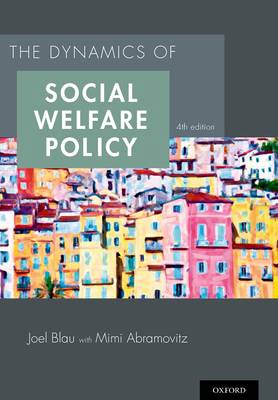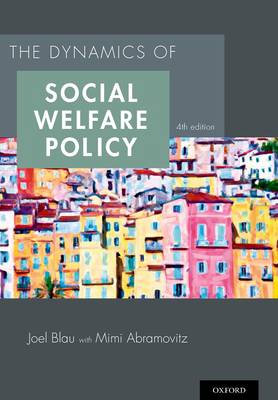
Door een staking bij bpost kan je online bestelling op dit moment iets langer onderweg zijn dan voorzien. Dringend iets nodig? Onze winkels ontvangen jou met open armen!
- Afhalen na 1 uur in een winkel met voorraad
- Gratis thuislevering in België vanaf € 30
- Ruim aanbod met 7 miljoen producten
Door een staking bij bpost kan je online bestelling op dit moment iets langer onderweg zijn dan voorzien. Dringend iets nodig? Onze winkels ontvangen jou met open armen!
- Afhalen na 1 uur in een winkel met voorraad
- Gratis thuislevering in België vanaf € 30
- Ruim aanbod met 7 miljoen producten
Zoeken
Omschrijving
The Dynamics of Social Welfare Policy uses the lens of an innovative policy model and an emphasis on social change to break new ground in social welfare policy texts. Starting from the explicit premise that every kind of social work practice embodies a social policy, the book stresses that policy knowledge enables social workers to help clients as well as to help themselves. Drawing on this awareness, the text then makes the standard social welfare policy material come alive by asking two new questions: 1) what factors trigger social change in these social policies?; and 2) how do these factors affect the social policies that influence what social workers actually do? To answer these questions, it develops a five-part policy model, which shows, through full chapters on each subject, how economics, politics, ideology, social movements, and the history of social welfare define social welfare policy.
Specificaties
Betrokkenen
- Auteur(s):
- Uitgeverij:
Inhoud
- Aantal bladzijden:
- 560
- Taal:
- Engels
Eigenschappen
- Productcode (EAN):
- 9780199316014
- Verschijningsdatum:
- 17/02/2014
- Uitvoering:
- Paperback
- Formaat:
- Trade paperback (VS)
- Afmetingen:
- 178 mm x 251 mm
- Gewicht:
- 861 g

Alleen bij Standaard Boekhandel
+ 217 punten op je klantenkaart van Standaard Boekhandel
Beoordelingen
We publiceren alleen reviews die voldoen aan de voorwaarden voor reviews. Bekijk onze voorwaarden voor reviews.











